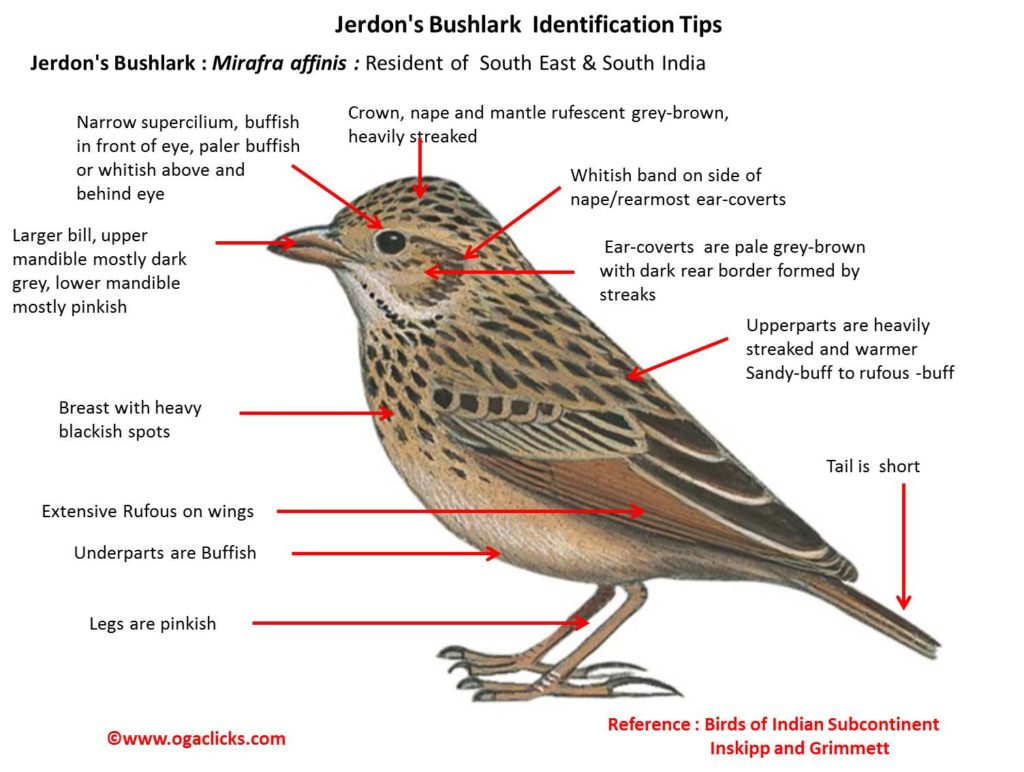
Jerdon’s Babbler Chrysomma altirostre
Etymology:
- Chrysomma : Greek word khrusos gold; omma
- Altirostre : Latin word Alti – High, Rostrum- Beak
Distribution in India: Resident of Peninsular India.
Description: Size of 13·5–15 cm. It is a heavy-bodied lark with large bill, short tail and wings, and rather long legs. It has relatively narrow supercilium, usually buffish in front of eye, paler buffish or whitish above and behind eye. The ear-coverts are pale grey-brown with inconspicuous dark eyestripe and dark streaks at rear forming dark rear border).It has a variably distinct whitish band on side of nape/rearmost ear-coverts. The crown, nape and mantle are rufescent grey-brown, and heavily streaked; dark grey-brown or blackish-brown upperwing-coverts and tertials with buffish or rufous-buff tips and edges. The remiges are dark grey-brown or blackish-brown, broad rufous edges of primaries forming prominent patch. The tail is dark grey-brown, buffy outer edges in outermost pair of rectrices. The underparts are buffish (paler when plumage worn), heavy blackish spots on breast. The upper mandible is mostly dark grey, lower mandible mostly pinkish. The legs are pinkish. Both the sexes are alike in plumage, female on average smaller. The juvenile differs from adult mainly in more extensive and more clear-cut dark centres and narrow pale buffish tips on crown, mantle and scapulars.
Habitat: It is found in open habitats, such as fallow fields with bushes and trees along margins, and scrub-covered rocky ground, plenty of scrub, bamboo thickets and trees, such as forest edges, and even in scrubby glades in open forest. It is found up to 1500 m. It frequently lands in trees when flushed.
Food Habits: It eats Seeds and Invertebrates.
Breeding habits: They breed in Dec–May, from Mar in India; Mar–Aug/Sept in Sri Lanka. The mating ritual by male is a short, low song flight, the male ascends some metres, and then descends with wings held in shallow V-shape, tail spread, legs dangling. The nest is a cup of grass, often domed, placed in depression on ground, frequently under a stone or bush. They lay a clutch of 3–4 eggs.